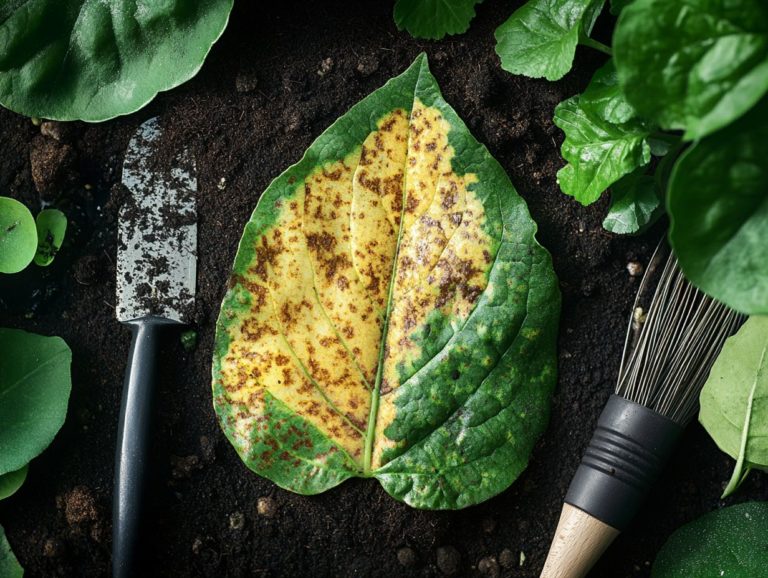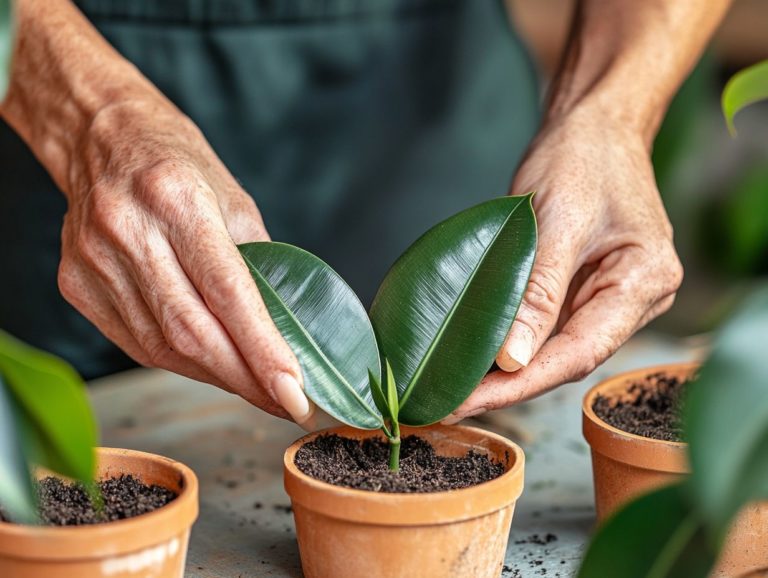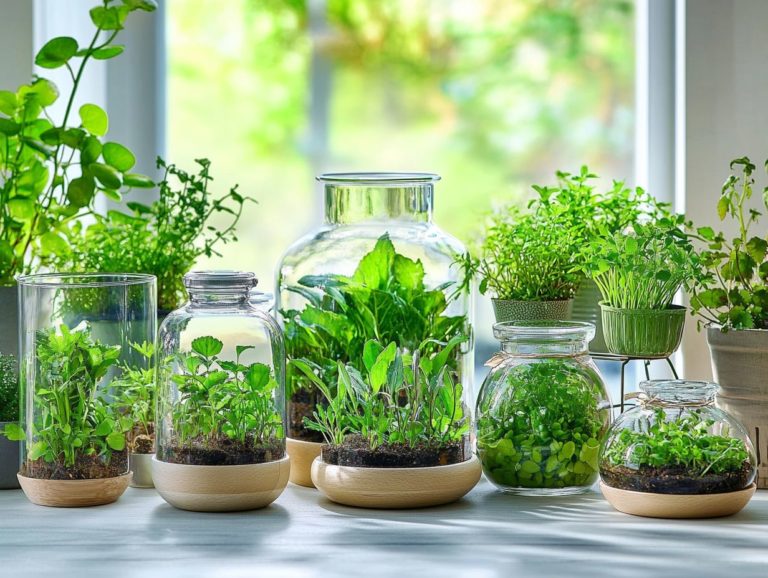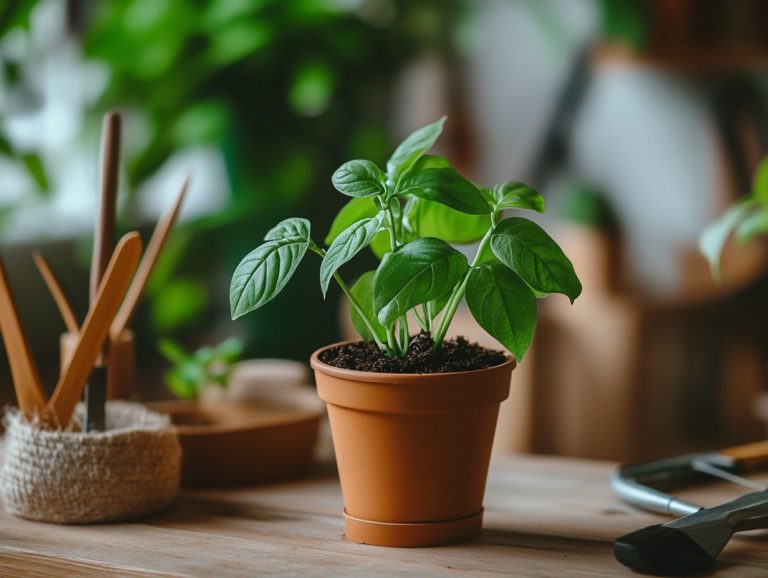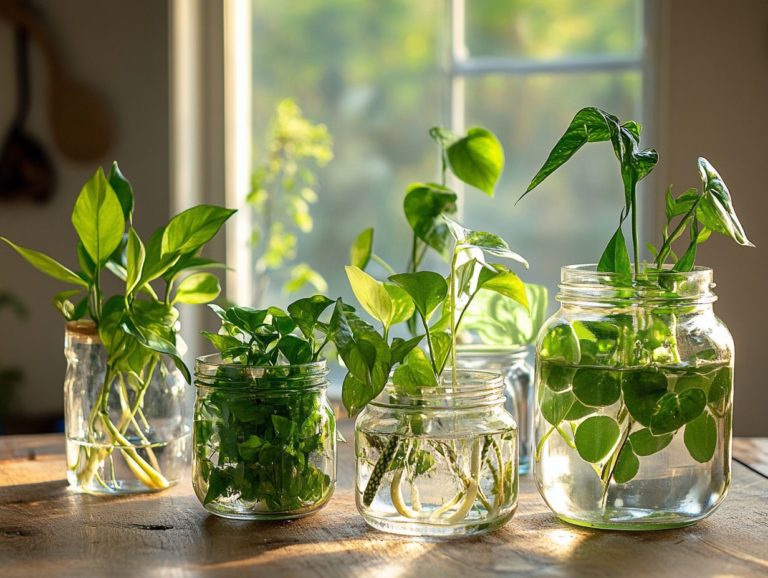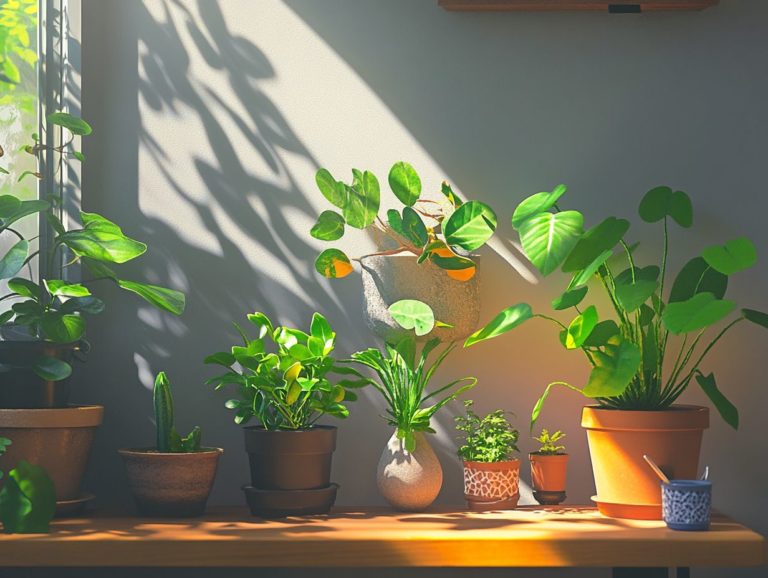How to Propagate a String of Hearts
Curious about the enchanting String of Hearts plant? Renowned for its delicate, heart-shaped leaves and cascading vines, this beloved houseplant is a visual delight and remarkably easy to propagate.
Discover the many benefits of propagating your String of Hearts. Explore methods such as water and soil propagation, and gain essential tips for success.
Learn how to care for your newly propagated plants to help them thrive in their new environments!
Immerse yourself in the world of plant propagation and elevate your green thumb to expert status!
Contents
Key Takeaways:
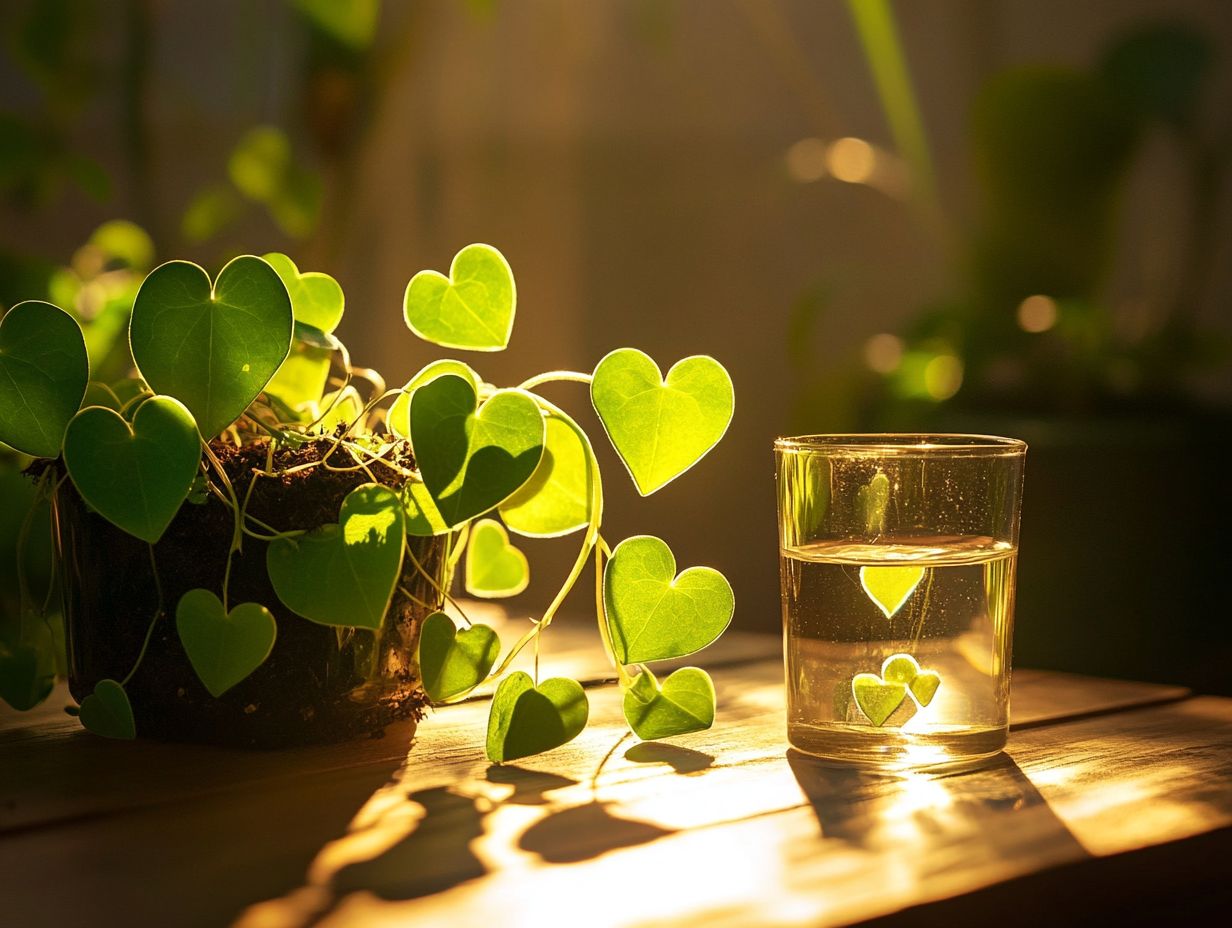
- Propagating a String of Hearts plant can be done through water or soil methods, each with unique benefits and success rates.
- Water propagation involves placing cuttings in a jar of water and changing the water regularly. Soil propagation requires rooting cuttings in a well-draining potting mix.
- For successful propagation, use healthy cuttings, provide adequate light and moisture, and avoid common mistakes like over-watering or using contaminated tools.
What is a String of Hearts Plant?
The String of Hearts, or Ceropegia woodii, is an exquisite indoor hanging plant that captivates with its dainty heart-shaped leaves. These leaves gracefully cascade down, earning admiration from houseplant enthusiasts.
Originating from South Africa, this vining beauty is not just visually appealing but also features unique propagation methods that make growing new plants easy.
Imagine stems growing several feet long, adorned with a delightful array of greenish-silver leaves, occasionally kissed by a subtle purple hue. As an indoor companion, it requires minimal effort just bright, indirect sunlight and a sprinkle of water now and then. Whether you’re just starting out or a seasoned pro, you’ll love how easy this plant is to care for!
Its charming growth habits are a real showstopper, with new vines sprouting even in less-than-ideal lighting conditions. No wonder it s becoming a must-have in modern homes!
The String of Hearts adds an adorable flair to any indoor garden, effortlessly bringing whimsy and charm to shelves, hanging baskets, or any nook yearning for a touch of greenery.
Benefits of Propagating String of Hearts
Propagating String of Hearts offers numerous benefits for houseplant enthusiasts. You can expand your indoor garden while enjoying a remarkable success rate in producing new plants through various methods, whether in water or soil.
This delightful vining plant not only elevates your living space with its lush greenery but also turns gardening into a fun experiment, providing a perfect opportunity to share your botanical creations with friends and family.
Why Propagate a String of Hearts Plant?
Propagating a String of Hearts plant is a rewarding journey that expands your collection while nurturing healthy specimens adorned with stunning heart-shaped leaves. This charming hanging plant can infuse your space with a touch of nature s beauty, making it ideal for enhancing your home or office decor.
The unique aesthetics of this delightful plant add a playful vibe to your surroundings, inviting admiration and sparking conversations among your guests. Many find immense satisfaction in nurturing plants; watching them grow can reduce stress and instill a profound sense of accomplishment.
Maintaining a collection of these resilient plants requires minimal effort, making them practical for even the busiest individuals. By incorporating more plants into your living spaces, you not only beautify your environment but also enhance air quality, creating a healthier atmosphere. This emotional connection to greenery fosters a genuine love for plants, enriching your everyday life through the simple act of propagation.
Ready to dive into the world of plant propagation? Grab your cuttings and let’s get started!
Methods of Propagating String of Hearts
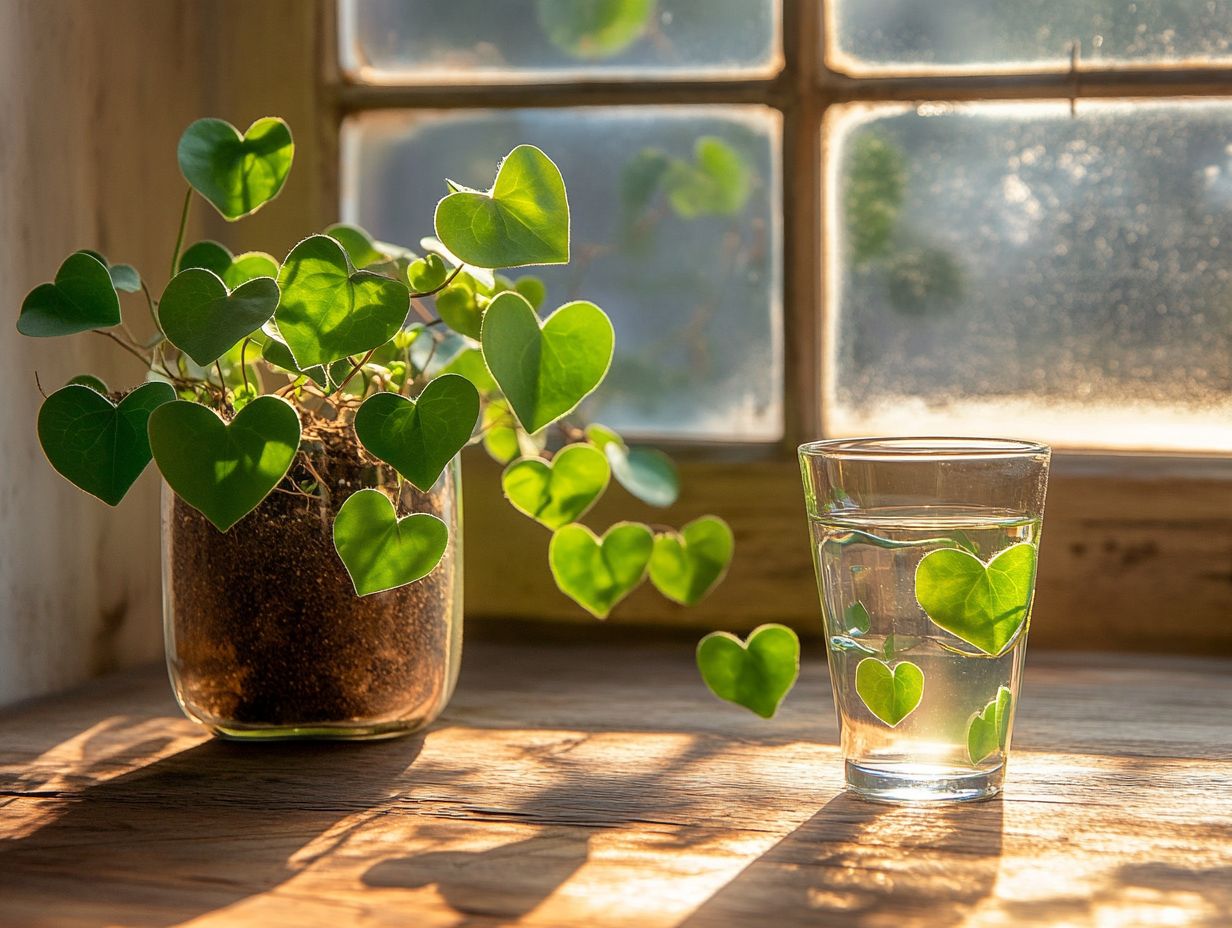
Here are effective ways to propagate your String of Hearts with ease! You can choose to root cuttings in water or go for soil propagation; each option has its unique nuances.
This flexibility allows you to tailor your methods to your preferences, whether you re a novice or a seasoned gardener. Feel free to experiment and discover the best technique that suits your indoor gardening setup.
Water Propagation
Water propagation is a favored method for cultivating new String of Hearts plants. Simply place your cuttings in water, often in a glass jar or small pots, and watch them grow! This technique allows you to witness the enchanting process of root growth.
Frequently cover the cuttings with a clear plastic bag to maintain humidity levels. This method can yield swift results with a commendable success rate.
To foster optimal growth, regularly monitor water levels. The cuttings can quickly deplete oxygen and nutrients. Change the water each week to keep it fresh and to curb the growth of bacteria that could jeopardize the cuttings. This emphasizes the importance of plant care.
For ideal root growth, ensure they receive bright, indirect light; too much sun can hinder progress. Once the roots reach a few inches in length, transition them to well-draining soil. Gently remove the cuttings from the water, allowing any excess moisture to drain, and plant them in a suitable mix that helps them acclimatize gradually to their new environment, encouraging robust plant growth.
Soil Propagation
Soil propagation is a highly effective method for growing your String of Hearts plants. By placing cuttings directly into soil that allows water to flow through easily like potting soil blended with perlite or sphagnum moss you can encourage healthy root development.
This approach allows the plant to acclimate more naturally, making the journey all the more satisfying. Focus on creating a potting mix that balances moisture retention and aeration, setting the stage for ideal root growth.
Select healthy cuttings, trimming them just below a node (the small bump on the stem where leaves grow) to maximize their rooting potential. Once planted, position the cuttings in bright but indirect light to prevent wilting, while ensuring they receive warmth to promote growth.
Regularly misting the cuttings will help maintain humidity levels, but monitor the soil moisture. Water only when the top inch feels dry. By following these steps, you will nurture cuttings that thrive and develop into robust, healthy plants that will charm your indoor garden.
Tips for Successful Propagation
To successfully propagate your String of Hearts, embrace several key tips to ensure that your efforts result in healthy and vibrant new plants. Master the right cutting techniques, maintain optimal humidity levels, and adhere to sound plant care practices, including monitoring soil conditions. These will greatly enhance your chances of success.
This knowledge empowers you, transforming you into a more confident gardener in your propagation journey and enhancing your overall experience with houseplant care. Get ready to watch your cuttings flourish!
Best Practices and Common Mistakes
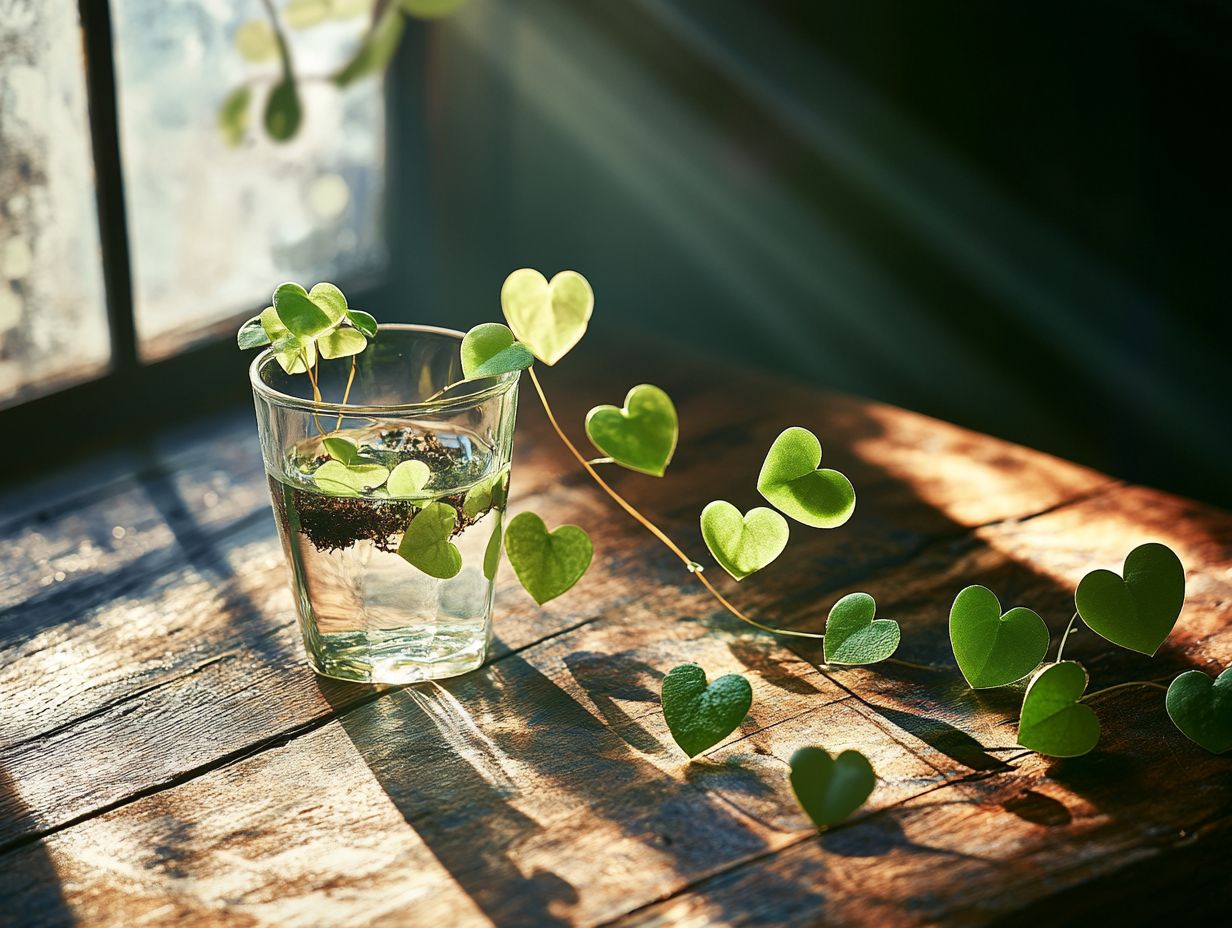
Know the best practices and common pitfalls for propagating a String of Hearts. This knowledge boosts your success rate and helps you nurture thriving houseplants. By being mindful of potential traps like overwatering, insufficient light, and poor soil conditions, you can easily sidestep these issues and ensure beautiful results, contributing to your indoor gardening success.
Understanding your plant s light needs is key! This plant loves bright, indirect sunlight. Establishing a consistent watering schedule helps prevent the roots from getting too much water. Selecting a well-draining soil mix promotes healthy growth and reduces the risk of root rot.
Regularly observing your plants is crucial; they communicate their needs through subtle cues. For example, yellowing leaves may suggest overwatering, while stretching leaves could hint at inadequate light. By adopting a mindset of patience and attentiveness, you empower yourself to create the perfect environment for your String of Hearts to thrive. Additionally, learning simple techniques to propagate pothos can enhance your plant care experience.
Caring for Newly Propagated String of Hearts
Caring for your newly propagated String of Hearts plants demands a discerning approach, particularly during the transplanting process and in ongoing maintenance. Once you ve successfully propagated them, it s crucial to transition them into suitable pots and the right soil. Ensure they are placed in a well-draining soil mix that supports their growth.
Managing humidity levels and light exposure is essential for helping these charming plants flourish in their new environment.
Transplanting and Maintenance Tips
Transplanting your newly propagated String of Hearts is a pivotal step in nurturing their growth. This process allows them to acclimate to their new pot and well-draining soil, providing the essential nutrients and support they crave.
When you undertake this task, ensure you place them in bright, indirect light to foster robust growth direct sunlight can scorch those delicate heart-shaped leaves.
Selecting the right pot size is vital; aim for a container that’s 2-3 inches larger in diameter than the root ball. This promotes healthy root growth without overwhelming the plant. For the soil mix, a combination of cactus soil, perlite, and a touch of orchid bark ensures excellent drainage and aeration.
After transplanting, your regular care routine should involve watering only when the top inch of soil feels dry, typically every 1-2 weeks. These plants thrive when allowed to dry out between waterings. Don t wait! Fertilize monthly during the growing season to boost your plant s health, and don t hesitate to do some occasional pruning to maintain the plant’s shape and encourage branching.
Frequently Asked Questions
What is a String of Hearts plant?
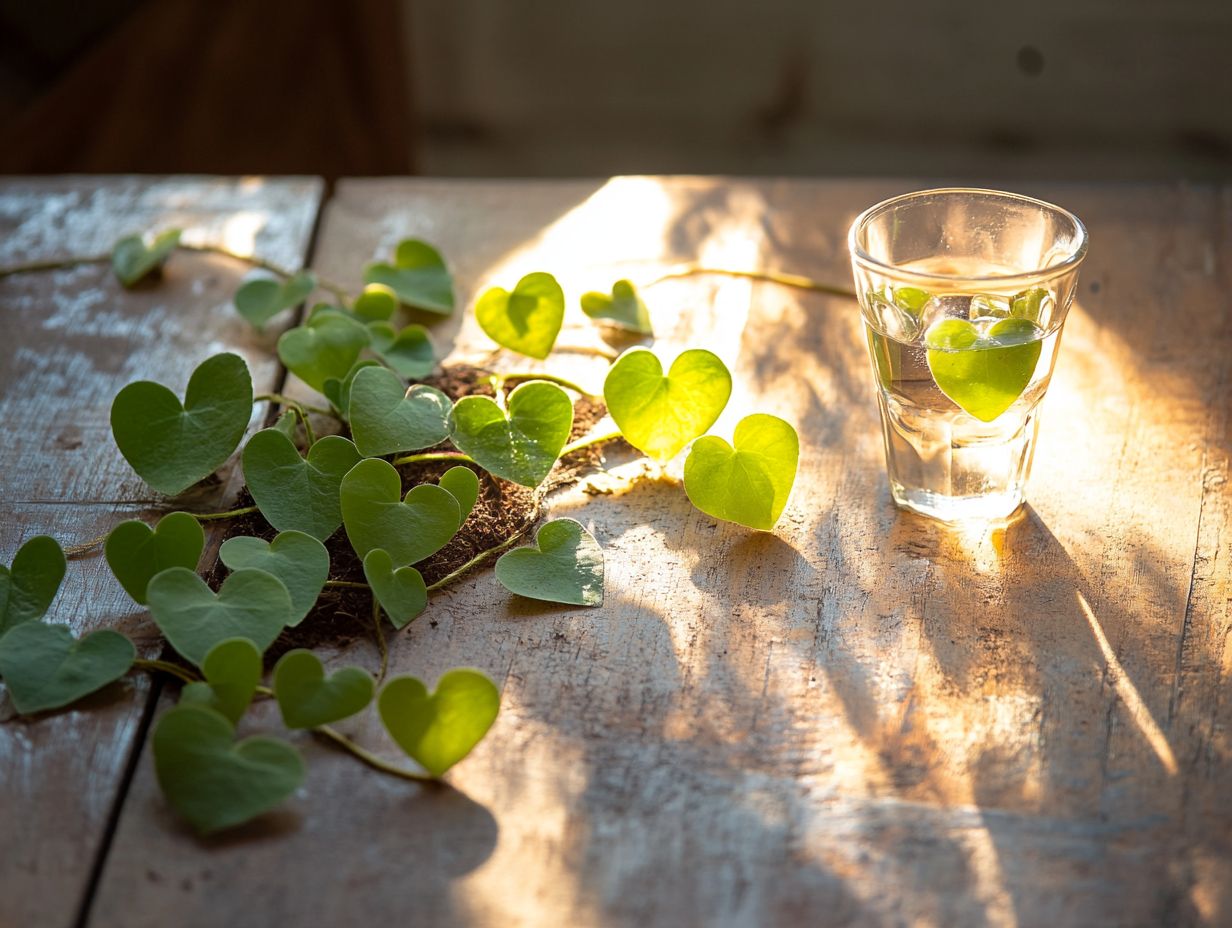
A String of Hearts plant, also known as Ceropegia woodii, is a beautiful trailing plant with heart-shaped leaves. It is a popular houseplant due to its low maintenance and unique appearance.
How can I propagate a String of Hearts?
To propagate a String of Hearts, you can either use stem cuttings or tubers. Stem cuttings involve taking a cutting from the plant and placing it in water or soil until it develops roots. Tubers are small, potato-like structures that form on the plant’s stems and can be planted directly in soil.
When is the best time to propagate a String of Hearts?
The best time to propagate a String of Hearts is during its active growing season, typically in the spring or summer. This is when the plant is actively producing new growth and is more likely to successfully root and grow.
What type of soil should I use for propagating a String of Hearts?
A well-draining soil mix is best for propagating a String of Hearts. Mix equal parts of potting soil, perlite, and sand to create a suitable soil mix. This will prevent the plant from sitting in overly wet soil, which can cause root rot.
How often should I water my propagated String of Hearts?
Keep the soil slightly moist, but not too wet when propagating a String of Hearts. Water your plant weekly, or whenever the top inch of soil feels dry.
Watch for overwatering, as it can lead to rot.
Can I propagate a String of Hearts in water?
Yes! Propagating a String of Hearts in water is easy. Take a stem cutting and place it in a jar or vase filled with water.
Change the water every few days to prevent bacteria from growing. Once roots form, transfer the cutting to soil for continued growth.

